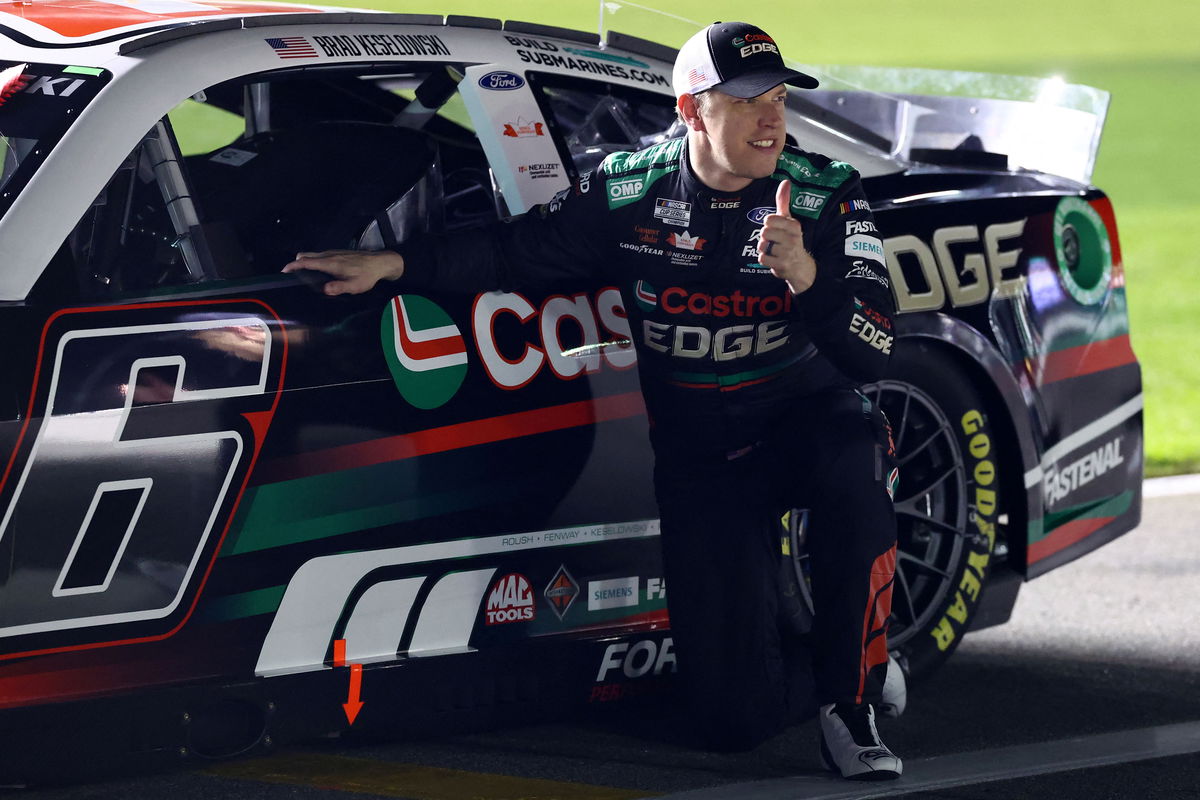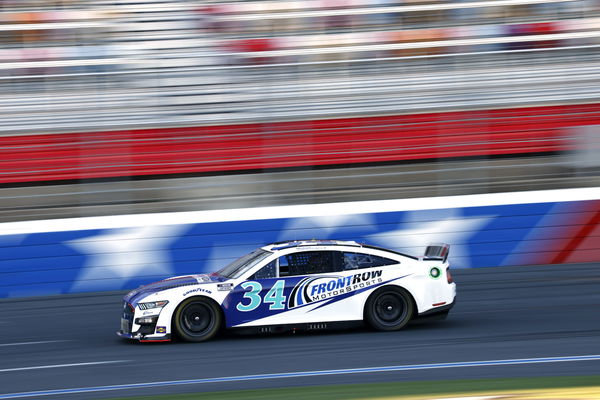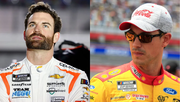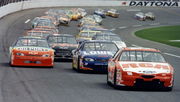
USA Today via Reuters
Feb 14, 2024; Daytona Beach, Florida, USA; NASCAR Cup Series driver Brad Keselowski (6) during qualifying for the Daytona 500 at Daytona International Speedway. Mandatory Credit: Mark J. Rebilas-USA TODAY Sports

USA Today via Reuters
Feb 14, 2024; Daytona Beach, Florida, USA; NASCAR Cup Series driver Brad Keselowski (6) during qualifying for the Daytona 500 at Daytona International Speedway. Mandatory Credit: Mark J. Rebilas-USA TODAY Sports
As a team owner, Brad Keselowski knows the struggles of making a team work. It’s not just about the costs, it’s bringing in investors and the wins whenever possible. It’s this spirit that one of the greatest car creators embodied. With Henry Ford’s creation came the pressure to bring people to his brand, and it took a race win to accomplish it.
Watch What’s Trending Now!
Building on this, Brad Keselowski shared a story about the worst loss for the Ford Motor Company after a race win that gave them the chance to establish an automotive dynasty.
ADVERTISEMENT
What is Brad Keselowski’s all-time favorite story?
In the early 1890s, people liked to use their trophies as household decor and add beauty to the space with mastered art pieces. Now, the top racer at the time, Alexander Winston, asked his wife what she wanted as the trophy after the race organizer contacted him, assuming it would be Winston winning the race. He customized a beautiful trophy, a “Crystal Punch Bowl Set,” to suit his wife’s taste. At the same time, Henry Ford was not well-known in his home state Michigan. His fame came with his participation in the 1901, 10 lap Sweepstakes Car Race, against Alexander Winton. It was the only race that Ford had entered and won, that too against a well-established, experienced racer who won many races. However, the Crystal Punch Bowl Trophy had a different fate waiting for it.
In an interview with Kelley Earnhardt Miller, Brad Keselowski revealed what went wrong with the trophy. “Henry Ford wins the race, and the trophy was this beautiful Crystal Punch Bowl Set. You don’t know it’s trophy, so that punch bowl set, sat in his house until the day Henry Ford and his wife Clara passed away. They went through his house and they cleaned it out they just like we don’t know what the stuff is, they got rid of the punch bowl set because they just thought it was like a household item, like it literally went to like some estate auction.”
Why was the bowl of such significance? Just a few years before winning the race, The Detroit Automobile Company had gone fallen into hard times. The win against Alexander Winston, the person who founded the Winton Motor Carriage Company, gave Henry Ford the attention his automobiles needed. Investors quickly began pouring in and he set up the Ford Motor Company two years later. The Model T emerged just a little while later as well.
ADVERTISEMENT

Getty
CONCORD, NORTH CAROLINA – NOVEMBER 17: Michael McDowell driver of the #34 Front Row Motorsports Ford drives during NASCAR Cup Series Next Gen testing at Charlotte Motor Speedway on November 17, 2021 in Concord, North Carolina. (Photo by Grant Halverson/Getty Images)
Henry never had an interest in racing, as per his statement mentioned in Ford’s corporate history article, “I never thought anything of racing, but the public refused to consider the automobile in any light other than a fast toy. Therefore, later we had to race.” Following the reasons, he decided that he had to participate in a race. Back in those days, to get one of these vehicles was not so affordable and Ford wanted to make such a car that people could get. But the only way he had that moment was to participate and let others know how much better was his car because many people used to judge the car on its performance in the race. His victory not only gave his brand a positive push but also secured backing from a financier. He named his winning car “Sweepstakes,” and today, people remember the race by that name. His third attempt to build his business was a colossal success, and today his company stands strong.
ADVERTISEMENT
As a result, the lost trophy could be worth $1 million or more according to Keselowski. However, the more important question here is how Ford made it to NASCAR if racing wasn’t on Henry Ford’s mind.
Top Stories
FOX Earns Rare Moment of Respect as NFL Honors NASCAR Legend Live on Air

NASCAR Radio Host Rejects Denny Hamlin’s Warning Amidst Call for Ex-Fox Broadcaster’s Apology

Corey LaJoie Pokes Joey Logano With Backhanded Dig After Star NFL Appearance

Ford Star’s Future in Doubt as 33-Year-Old Rumored to Jump Ship Amid Contract Uncertainty

Racing Broadcaster Gets Emotional as He Warns Fans Against What NASCAR Has Lost

Why did Ford Motor Company make their way to NASCAR?
After Henry Ford, his grandson Henry Ford II took over the management of the company in his hands after serving in the Navy, as his father passed away in 1943 due to stomach cancer. With the end of World War II, the company was struggling with bad finances, losing $10 Million a month. After that, the younger Ford opted for an aggressive management style and removed a few of the top management people from the company from his grandfather’s time.
ADVERTISEMENT
Going ahead, he replaced them with General Motors’ previous employees and hired 10 young professionals also known as Whiz Kids. This strategy delivered a positive result and by shifting to new production approaches of modern management, he finally came up with a successfully designed car with good efficiency. It was in 1949 when they received orders for 100,000 cars after the new launch. In the same year, NASCAR also started, when Glenn Dunaway won in his 1947 Ford in the NASCAR Strictly Stock Series inaugural race. NASCAR and Ford’s relationship is really old, as NASCAR is also a major event for Ford to do the marketing for their brand name.
Like the way Ford Sr. did in his days to set up in the first place. With time, Ford NASCAR’s car version has also upgraded, naming a few wills including the top-performing 1939 Ford Coup, featured before WWII, the 1965 Ford Galaxie, the 1967 Fairlane, the 1985 Thunderbird, 1998 Taurus, and the legacy goes on with every coming year with the Ford Motor Company’s team. It won’t be wrong to say that car racing is constantly shaping the company’s growth right from the time it started and with going on. Though it might have lost the million-dollar awards, its memory is still keeping the company’s going-on attitude alive.
ADVERTISEMENT
ADVERTISEMENT
ADVERTISEMENT

